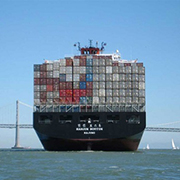Search Results:
Search Results:
Search Results:
Search Results:
| Stage 1: Design Process |
|
Step 1: Local Indigenous designers/artists/concept creators (see our list of Indigenous artists here) are hired to create designs that can be translated into a mat design or more often than not, we are approached by a community to assist in the creation of community-specific designs that meet their own distinct needs or, to fulfill an artist's desire to have one of their designs on a product that they too can market through their own business or community. We only work with designers who are from the culture that is specific to each design ie all Aboriginal designs are designed by Aboriginal artists, Torres Strait designs by Torres Strait Island artists and New Zealand Maori designs by Maori artists etc. We are also a signatory to the Indigenous Art Code and as such are committed to ethical and transparent business dealings with Indigenous artists and abide by the strict standards set out in the Code. |
Step 2:  The design stage of the process can take anywhere from a few days to a few months or longer depending on the designer, the design involved and approval sought from community. The "Walkabout" mat game designed in conjunction with Uncle Barry Watson took 18 months to complete and was a joint venture between Uncle Barry (concept creator) De Greer Yindimincarlie (graphic artist) and myself, JJ. |
|
Step 3: |
| Step 4: Once the sample mat has been produced and approved, the manufacturing process below can begin to bring the mats to market - please note that the process below relates to our recycled playmat range and not the recycled car tyre doormat range as these are manufactured using a different process (in brief the recycled car tyre material is imported from China and then printed locally in Australia using environmentally friendly colours and dyes). |
Stage 2: Manufacturing Process |
|
Step 1: |
Step 2:  The pellets of recycled plastics and polypropylene are then mixed with the colour desired that will become the base mat colour. |
|
Step 3: |
Step 4:  The liquid then gets fed through a tube which pushes through a water pool. This pool cools the hot plastic as it passes through and results in the plastic tube lengths being formed. |
Step 5: The recycled plastic tubes are checked for colour and thickness and then taken to the machines where they are placed in several slots which will be where the machine plucks the tubes from, to weave the mats. |
Step 6:.jpg) Each mat design has it's own board "Mould" which tells the machine the design and how many colours are to be used in the mat process. |
Step 7:   Once the mould has been loaded onto the machine then the machine can begin the mat weaving process - this stage can still be highly manual. There is a factory staff member always watching several machines at a time to ensure that each loop is thread into the loom at the correct time and place. |
Step 8: Once the mats are woven they go onto a roll of approx 200 mats at a time. They are then taken to the tables where a hot heat iron is used to cut and seal each mat end, and a black seal sewn onto the mat. |
Step 9:    Quality control at the factory is done, with a manual look over the mat to ensure that all is in order. They are then packed ready for being uploaded into a container and sent to us for the Australian retail market. |
Stage 3: Distribution |
Step 1:  Once the mats have arrived in Tweed Heads at HQ, we open each box and again check for quality control. |
Step 2: Once final QC has been completed, the mats are re-packed and sent out to clients across the country (both retail and wholesale) which includes a variety of Indigenous community groups and businesses who then sell the mats to both Indigenous and Non-Indigenous people, schools and community groups. Australia Post is our preferred domestic carrier. We offer a standard 30 day right of return on all our mats. No specific warranty can be given for this product as it depends on how the mat is used and under what conditions. Most schools and childcare centres are enjoying 2-3 years worth of life expectancy from the mats, families are getting much longer than this. We recommend that mats are only cleaned with soapy water and a hose, no harsh chemicals. Extended direct UV sunlight will deteriorate the mat so long-term sun exposure is not recommended and sharp objects are to be kept clear of the mats at all times. |
GIRL POWER:  Carly Wallace from NITV, De Greer Yindimincarlie, Wiradjuri Nation designer from Yindi Artz and myself JJ Stranan, Recycled Mats and Global Kids Oz |
|
|